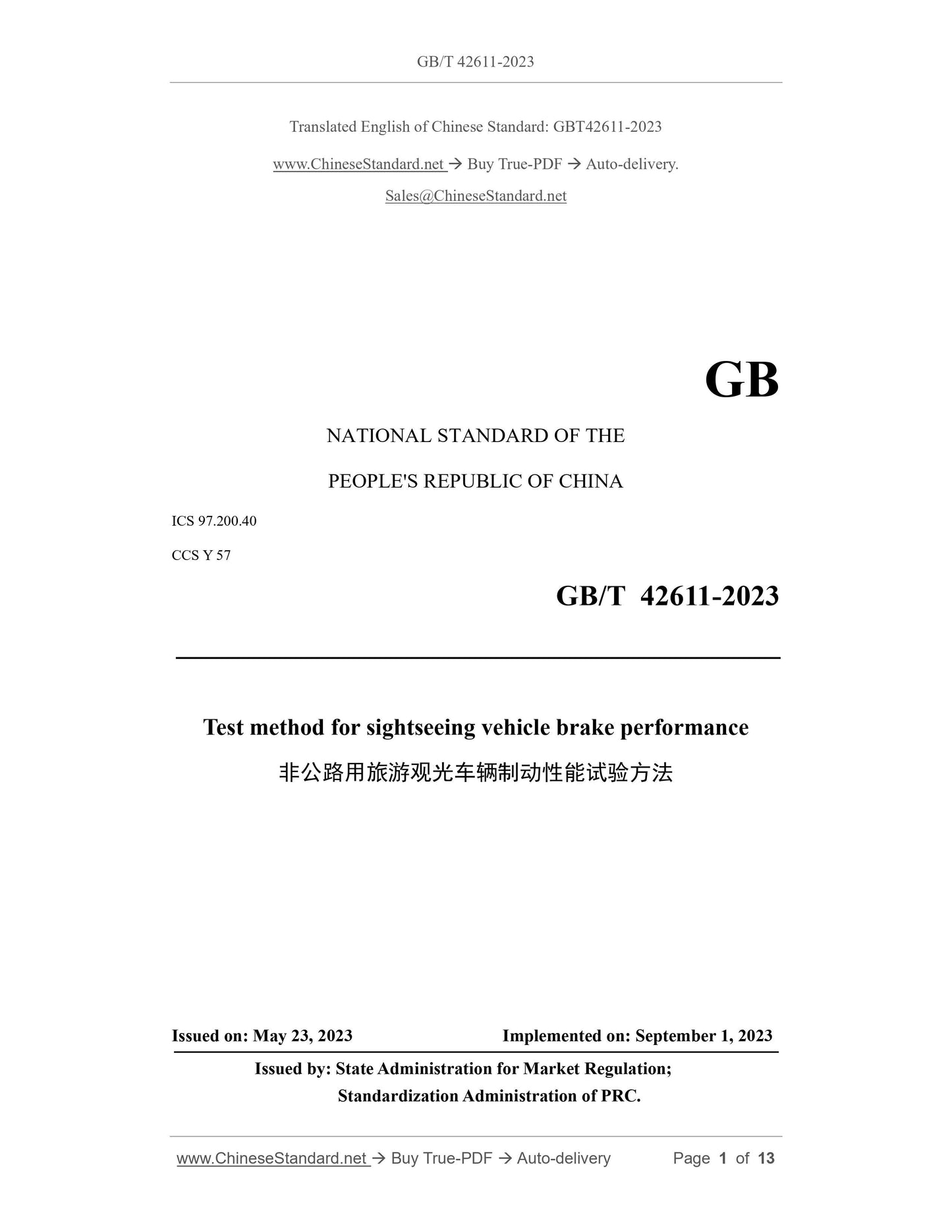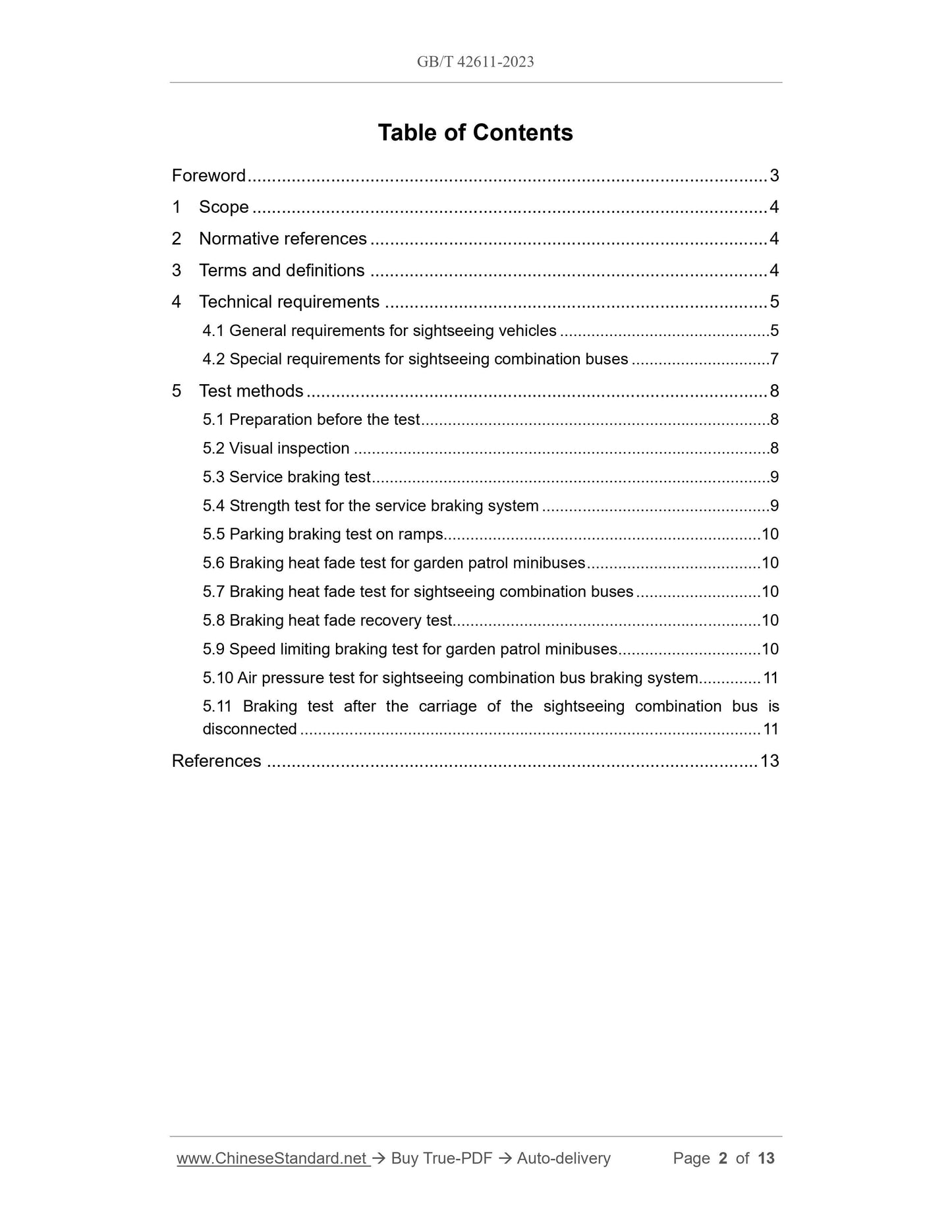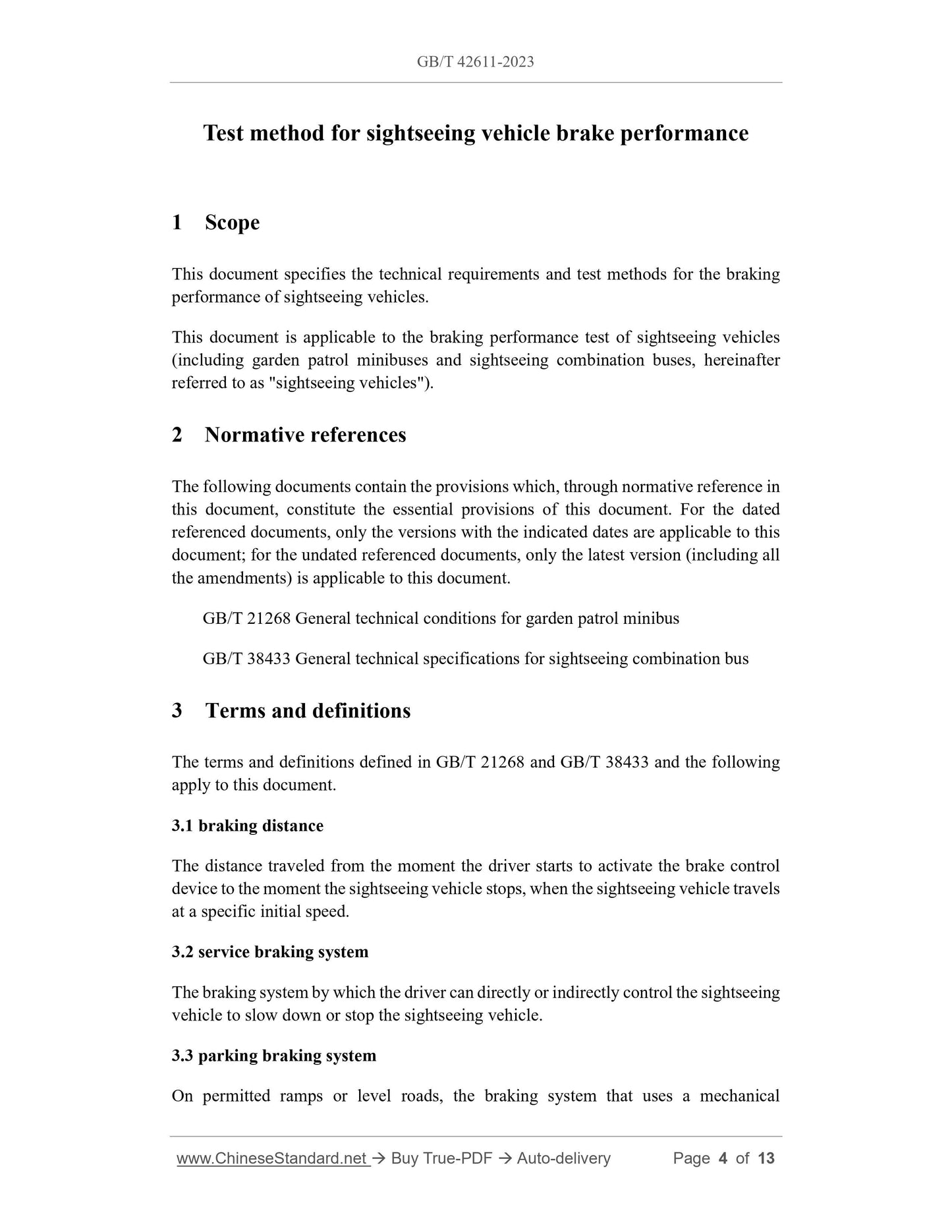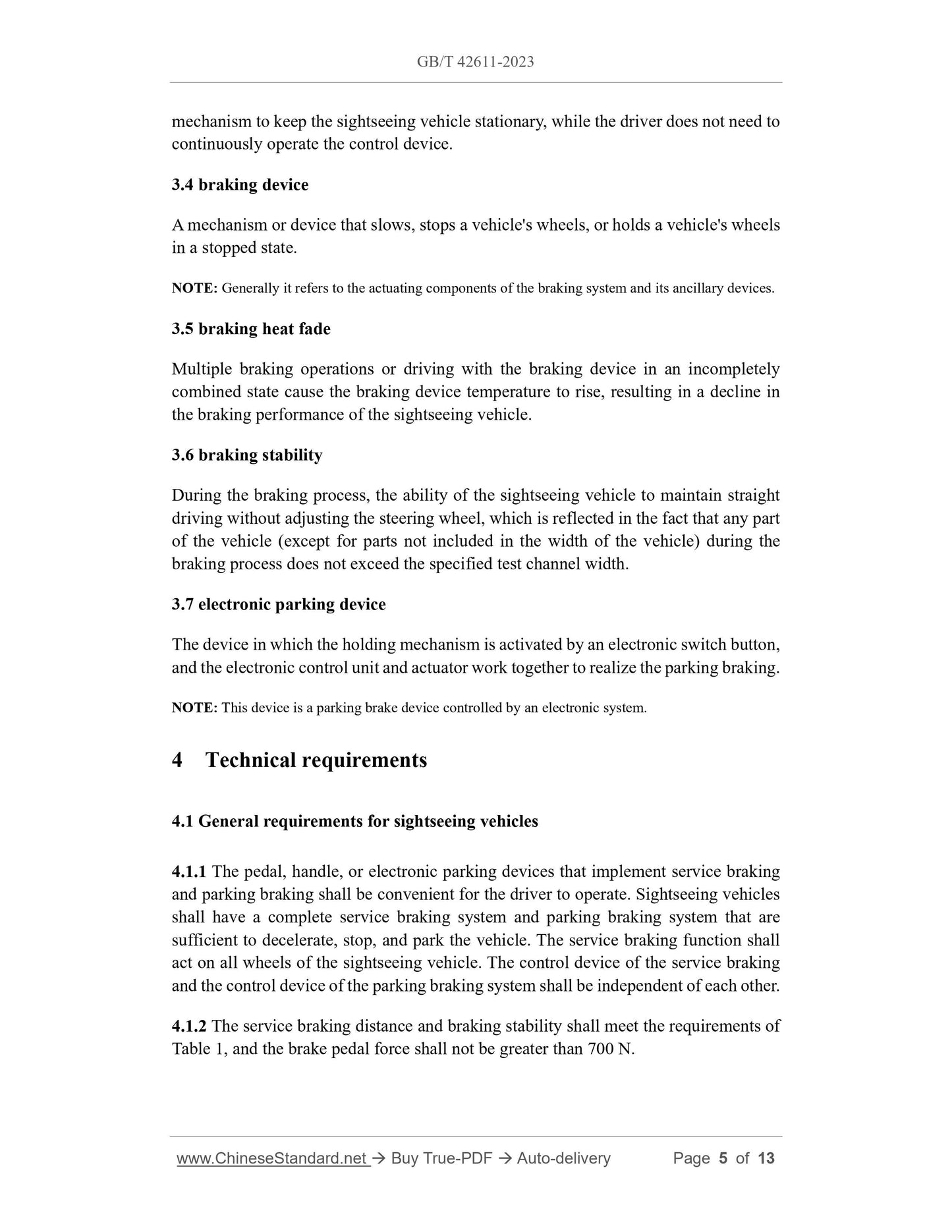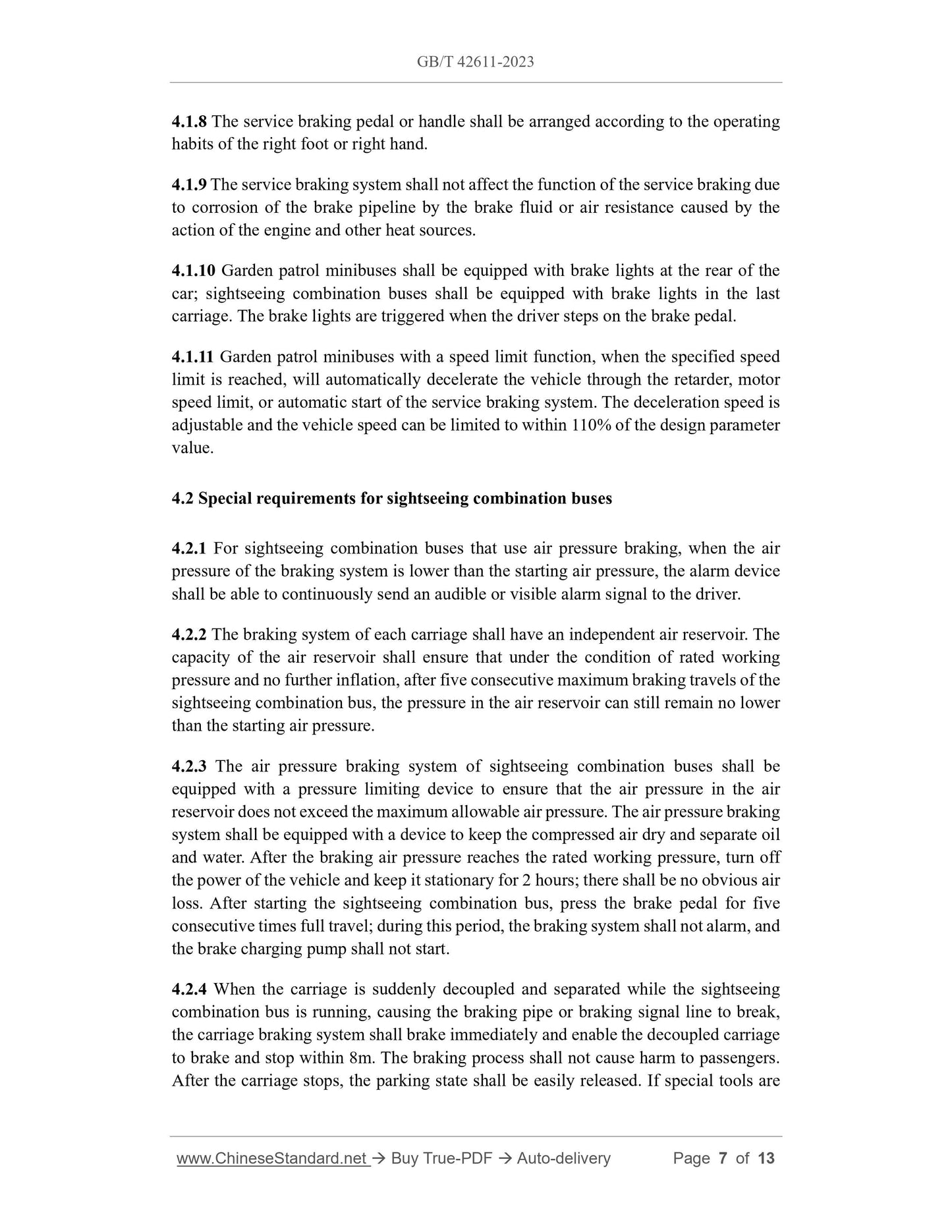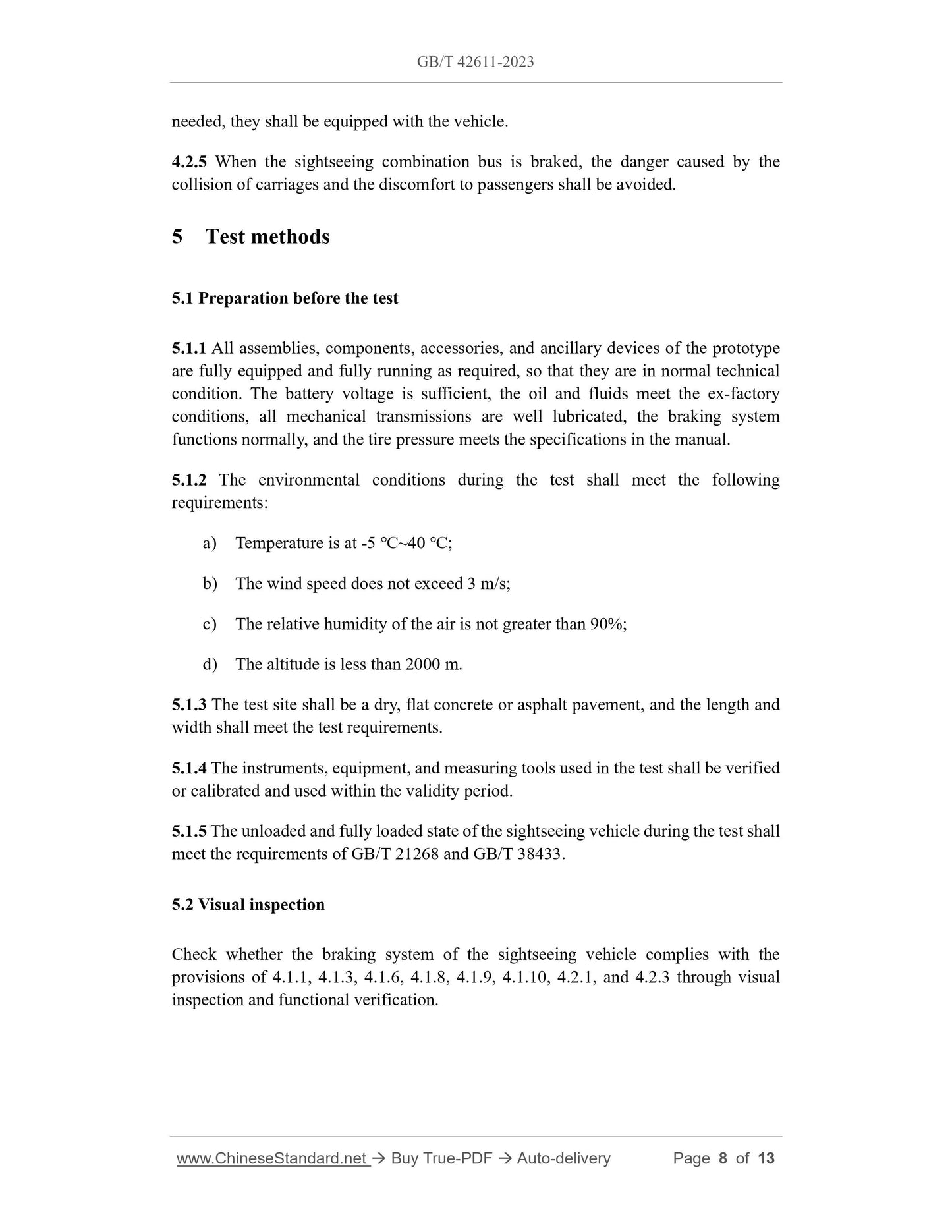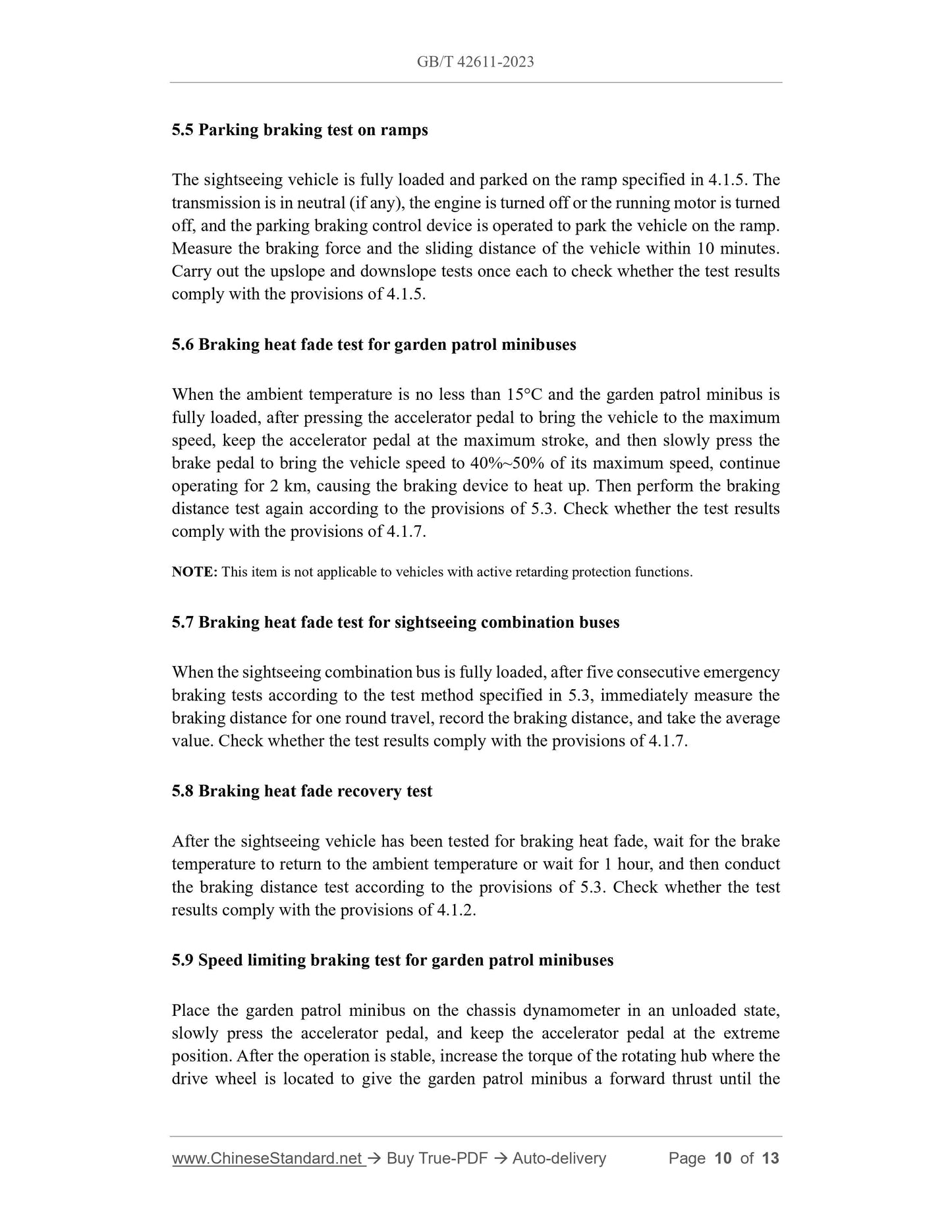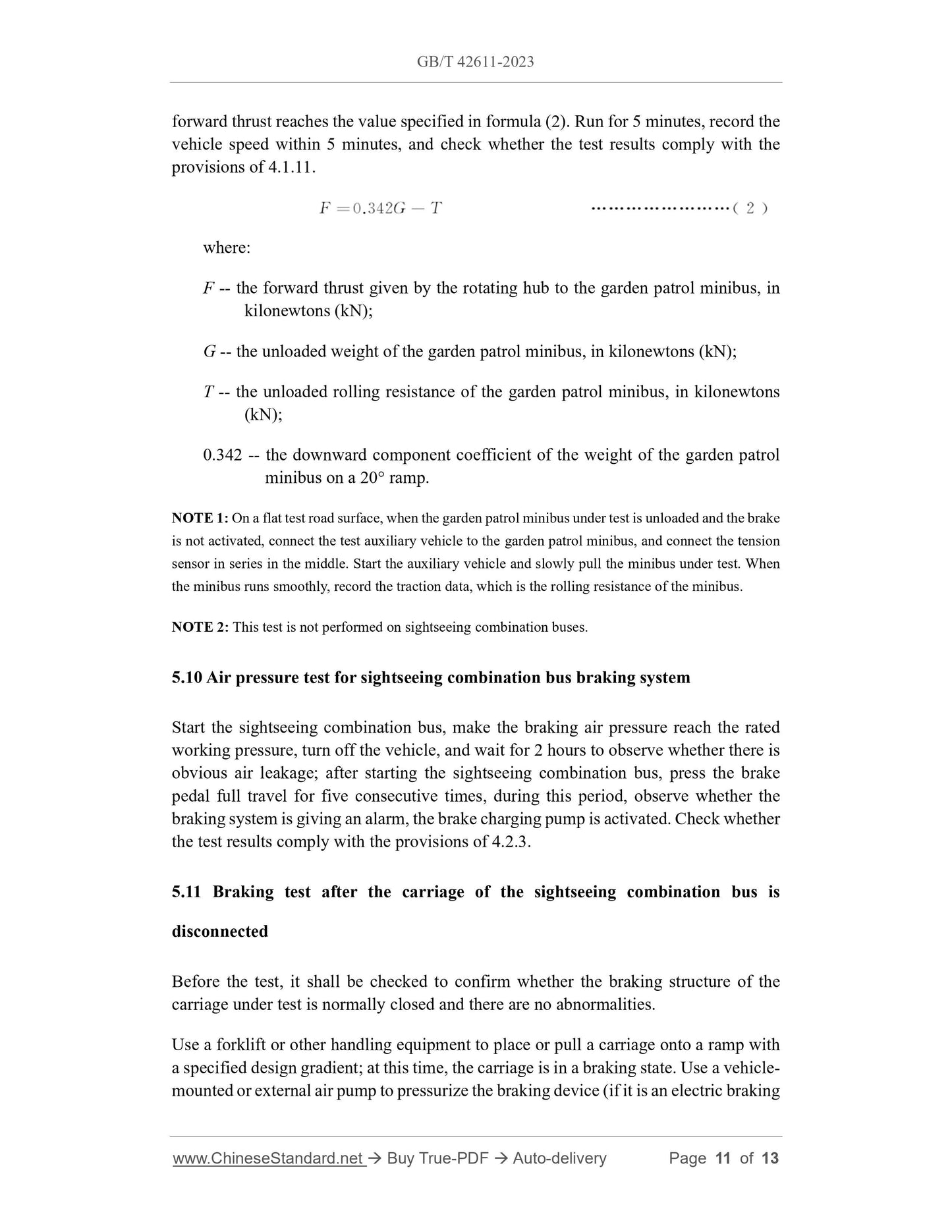1
/
of
8
www.ChineseStandard.us -- Field Test Asia Pte. Ltd.
GB/T 42611-2023 English PDF (GB/T42611-2023)
GB/T 42611-2023 English PDF (GB/T42611-2023)
Regular price
$185.00
Regular price
Sale price
$185.00
Unit price
/
per
Shipping calculated at checkout.
Couldn't load pickup availability
GB/T 42611-2023: Test method for sightseeing vehicle brake performance
Delivery: 9 seconds. Download (and Email) true-PDF + Invoice.Get Quotation: Click GB/T 42611-2023 (Self-service in 1-minute)
Newer / historical versions: GB/T 42611-2023
Preview True-PDF
Scope
This document specifies the technical requirements and test methods for the brakingperformance of sightseeing vehicles.
This document is applicable to the braking performance test of sightseeing vehicles
(including garden patrol minibuses and sightseeing combination buses, hereinafter
referred to as "sightseeing vehicles").
Basic Data
| Standard ID | GB/T 42611-2023 (GB/T42611-2023) |
| Description (Translated English) | Test method for sightseeing vehicle brake performance |
| Sector / Industry | National Standard (Recommended) |
| Classification of Chinese Standard | Y57 |
| Classification of International Standard | 97.200.40 |
| Word Count Estimation | 10,143 |
| Date of Issue | 2023-05-23 |
| Date of Implementation | 2023-09-01 |
| Issuing agency(ies) | State Administration for Market Regulation, China National Standardization Administration |
Share
